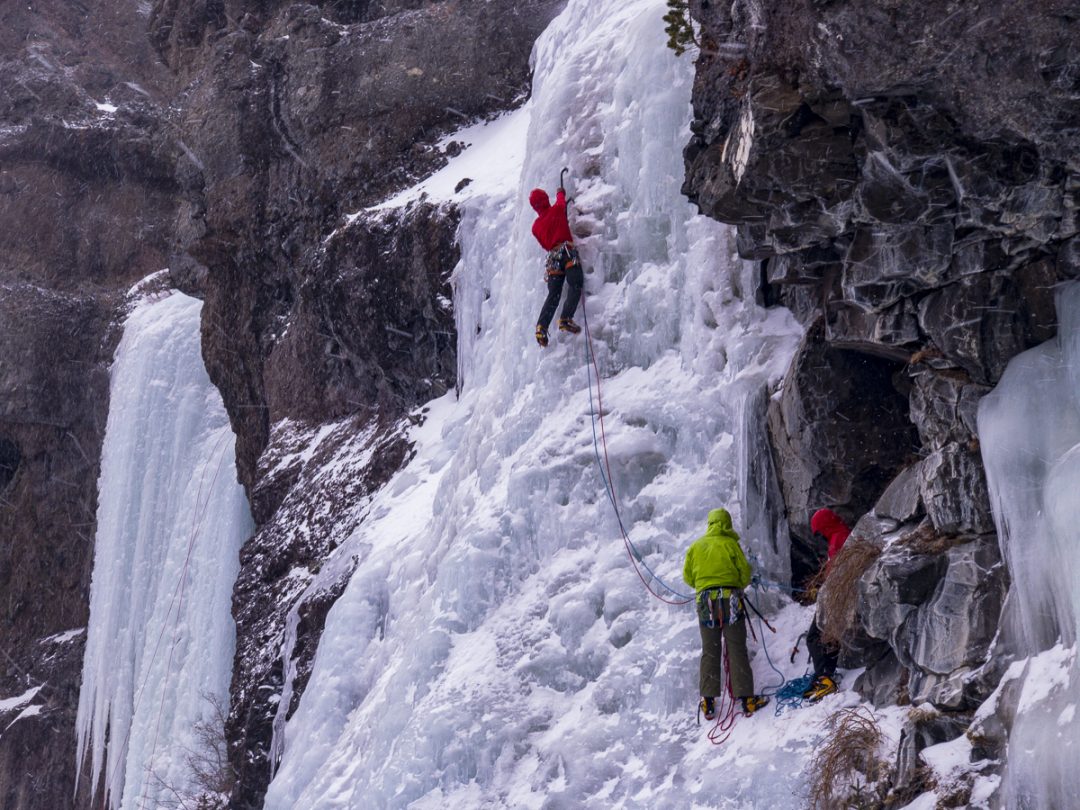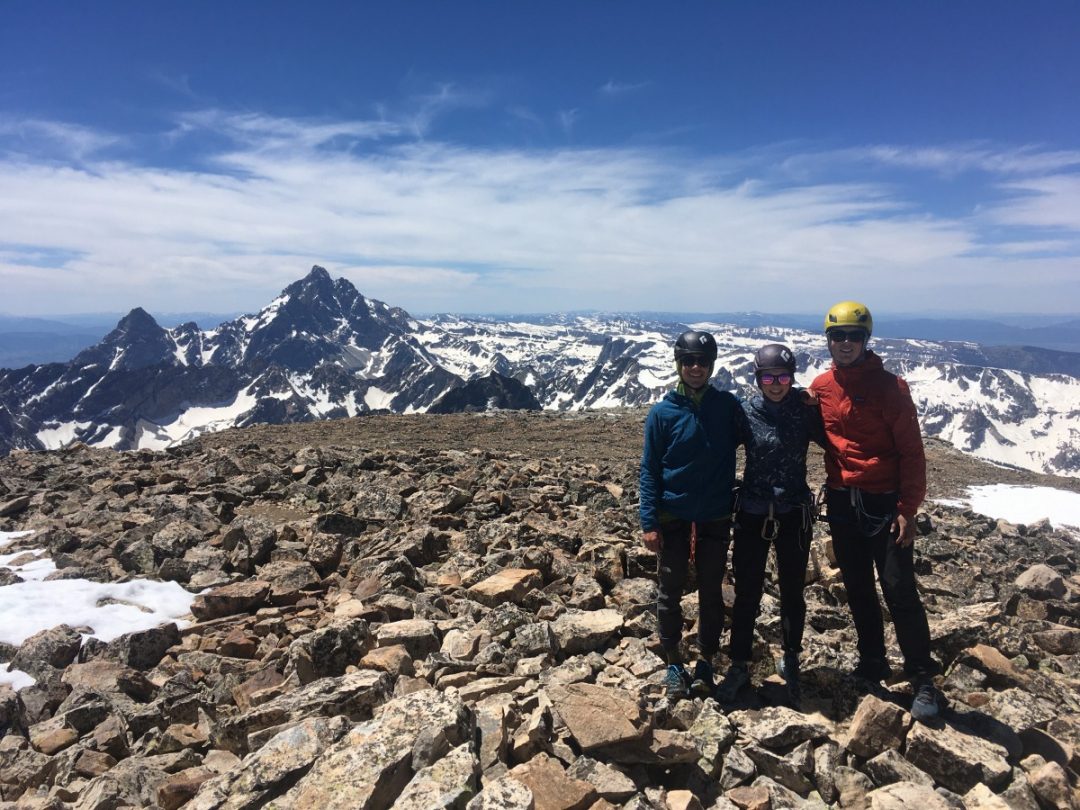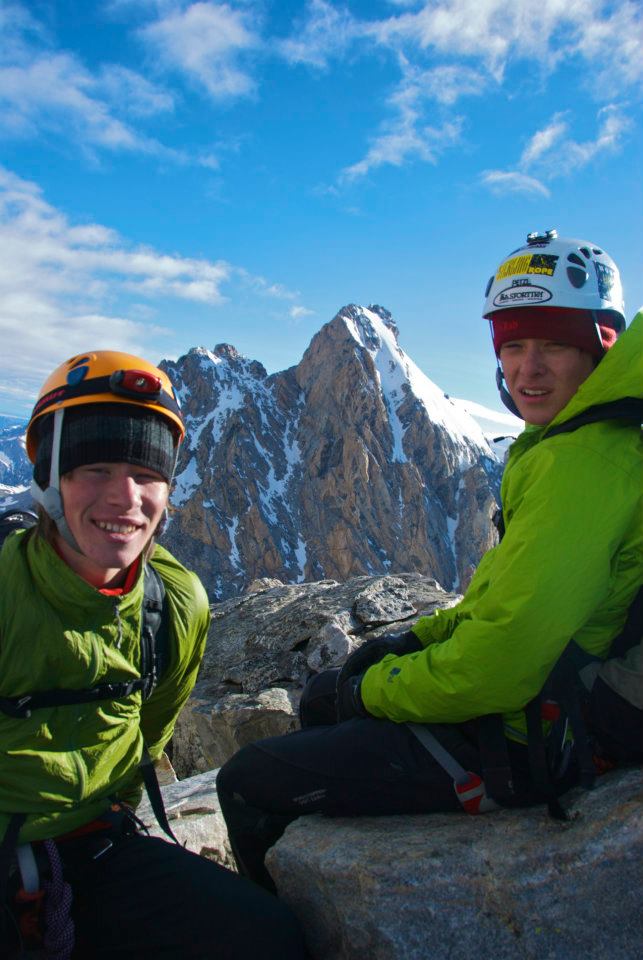
JMT students skiing in the Northern Bridger Range outside of Bozeman, 2019. Photo: Ian Lange, https://www.ianlangephoto.com.
The words are right there on Montana Mountaineering Association‘s (MMA) homepage: “Because mountains are the best teachers.” I’m not going to argue with that. But I will qualify and read between the lines: mentorship, solid and forgiving mentorship is part of that teaching process in the mountains. For many years now, the Bozeman-based non-profit Montana Mountaineering Association, and their teachers, have changed kids’ lives through their Junior Mountaineering Team. Matt Zia, the program’s director and new MMA Executive Director, placed the program in the context of the biggest picture of all.
“The genesis of the whole organization is a program called the Junior Mountaineering Program [or JMT] that is designed for high school students looking to learn how to rock climb, ice, climb, backcountry ski,” Zia said. “And through those activities, grow as humans.”
In 2003, Erin and Rebecca Taylor started the Montana Mountaineering Association in a much more modest Bozeman. Rebecca worked as an Occupational Therapist, while Erin was an educator. Both saw the need for a community-based organization to prepare adults to quest in the mountains and create mentors to lead new participants. As the organization evolved, Erin visioned a youth-oriented program that became formally known as the Junior Mountaineering Team.
“Erin really wanted to create community leaders through that program using the medium of mountaineering,” said Rebecca. “Really to build leaders by helping kids learn how to problem-solve, team build, have respect for the environment, all those things. And he pushed them for many years.”

JMT students and instructors on a mid-route belay ledge, E Ridge Disappointment Peak, Tetons, 2021. Photo: Matt Zia.
To get there, the JMT requires this basic tenet: teens be self-reliant and responsible to the group. “This is necessary with mountaineering as the backdrop because it’s dangerous; there can be high stakes,” said Rebecca. “One of the bigger goals was to look out for your team. And that’s why it’s called a team, not because it’s a competitive team, its a working-together type team.”
Entities like the International Olympic Committee have recognized they’ve got a generation gap problem- read cool void. In 1998 snowboarding was added to the IOC portfolio. Gym climbing and surfing took a bow in 2021. Skimo makes a debut in 2026. The proliferation of sports clubs and the travel team ethos are ubiquitous, even in mountain towns. Training and racing can seem like an all-consuming endeavor. Conversely, the JMT emphasizes connecting with local places by youth engaging in silent sports in remote forested and mountainous areas.
“I think one of the neat things about climbing and skiing in the mountains is that there’s no sort of formalized competition structure,” said Zia. “Yeah, certainly, people get competitive about it. But there’s not a formalized structure of, you know, this person is the best, this person finished second, third, whatever.”
The end goal for the program still, more than training kids to excel in a discipline measured by a performance metric, remains uplifting individuals, and by extension, a broader community through a ripple effect. Graduates of the JMT, through that intensive self-reliance, team cohesion, and problem-solving, would, the Taylors reasoned long ago, become better at-large community members as adults.

JMT students climbing multi pitch ice, Hyalite Canyon. Photo: Jason Thompson, https://www.jthompsonphotography.com.
The Gallatin Valley cradling Bozeman boasts big peaks on its outskirts, accessible rock, and world-class ice climbing not far from town. There are storied rivers, and there’s still a semblance of wilderness as far as the lower-48 are concerned. Although they exist, few community organizations afford teens the opportunity several times a month to engage in activities where they are challenged to make personal decisions (with the guidance of qualified adults) to ensure their safety. The JMT draws 10th, 11th, and 12th graders mostly from Bozeman but has tentacles extending to Helena, Billings, and Dillon. Zia explained that some teens arrive in Bozeman for weekend programming or make arrangements to miss school while learning in a different sort of classroom.
Potential participants apply to the program and commit to two to three days a month from January to June. The schedule includes ice climbing, an introductory avalanche course, backcountry skiing, rock climbing, and a culminating six-day expedition in the Tetons. Program fees are $2000, with partial and full scholarships available. The costs for the final trip are covered in full by an MMA scholarship fund. A reasonable gear list provided to potential applicants specifies options to rent much of the pricier items.

JMT students after a successful ascent of the CMC Route on Mt Moran, 2021. Photo: Matt Zia.
Another explicit JMT goal is to teach “high school students how to be safe, respectful, and skillful alpinist.” Word choice is critical here. The fact they use “alpinist” speaks volumes. Alpinist, in some respects, is also a loaded term. It conjures notions of high angles, multi-pitch climbs, steeper descents, wind, ice, and greater risk due to the more complex problem-solving. The idea of an alpinist is also aspirational. The JMT’s emphasis on personal and community growth as a corollary to backcountry travel are lofty goals. The JMT appears to be getting it done.
“One of, I think, the most impactful things a student said to me last year was during a debrief from a day of ice climbing in Hyalite,” recalled Zia. “Unprompted, he goes, ‘You know, it’s really interesting. The more I think about it, the more I realize that there is an inherent risk in every single thing that we do. And we just need to decide which of those risks we want to accept, which we want to mitigate, and which of them we want to avoid. Right?’ And I’m like, ‘Yeah, that’s it.'”

JMT students Parker Webb and Justin Willis on the Middle Teton, circa 2011. Both Parker and Justin have returned to MMA as instructors for the JMT. Photo: Parker Webb.
Along with organizations like Big City Mountaineers and the MMA, please link to resources in the comments if you know of other similar programs. Thanks.
Jason Albert comes to WildSnow from Bend, Oregon. After growing up on the East Coast, he migrated from Montana to Colorado and settled in Oregon. Simple pleasures are quiet and long days touring. His gray hair might stem from his first Grand Traverse in 2000 when rented leather boots and 210cm skis were not the speed weapons he had hoped for. Jason survived the transition from free-heel kool-aid drinker to faster and lighter (think AT), and safer, are better.
